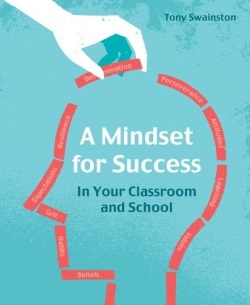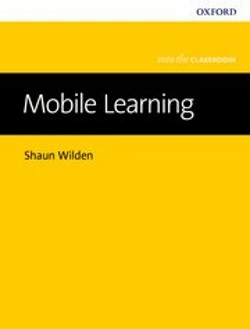Short Book Reviews
Hanna Kryszewska, Poland
Hanna Kryszewska is a teacher, teacher trainer, trainer of trainers. She is a senior lecturer at the University of Gdańsk, Poland. She is co-author of resource books: Learner Based Teaching, OUP, Towards Teaching, Heinemann, The Standby Book, CUP, Language Activities for Teenagers, CUP, The Company Words Keep, DELTA Publishing, and a course book series for secondary schools: ForMat, Macmillan. She is also co-author of a video based teacher training course: Observing English Lessons. Hania is a Pilgrims trainer and editor of HLT Magazine. E-mail: hania.kryszewska@pilgrims.co.uk

Puffed Out. The Three Little Pigs’ Guide to a Growth Mindset W. Hussey and B. Hymer. Crown House Publishing Limited. (2017). ISBN: 978-178583117-1, pp 152. This book is not aimed at EFL teachers, but English language teachers can learn from it a lot and surely will get inspired. The story of the three little pigs is well known and has been enjoyed by generations of children. This story in itself is engaging and describes an adventure. But when you look more closely it also teaches the readers/ listeners about the importance of joint effort, good planning and taking precautions. The authors believe that the story has many ‘blind spots’ which they set out to explore. They make the children think and explore. It starts with a chapter called “Pig or small’ which raises the issues of what ‘little’ means and whether the pigs are not too small to leave the house on their own, which in turn raises the issue of parental negligence. Each of the thirty chapters contains the same features, which are called: ponder, nudges, sticky points, thinkantation, and editors’ note. Additionally, each page has a soundbite or soundbites, like “Some pigs have curlier tails than others, how do they feel about this?” or “really-pigs can fly?”. The questions make the children think, reflect and analyse; but some require creating cut-outs, designing tags or posters, constructing a tripod or making a false beard. The book can inspire teachers and educators how to go about other popular stories. Very creative!

A Mindset for Success. In Your Classroom and School. T. Swainston. Crown House Publishing Limited (2017.) ISBN 978-178583197-3, pp.239. This book is aimed at teachers of any subject, so also language teachers will benefit greatly from reading it. What the author has done is move away from the approach many schools have adopted, an approach in which talent and IQ are valued. What the book does is mapping out a different way in which success and fulfilment can be reached by taking practical steps. In the words of the author the books shows how ‘grit, resilience and perseverance can be nurtured in every child, enabling them to take on the challenges of life and our changing world, which will lead them to greater academic success and personal happiness”. The book is divided into four parts: the importance of changing the mindset in schools, the essence of mindsets, how to change mindsets of a school community, and practical activities to change mindsets; all very inspiring and thought provoking. The Appendices are not to be missed, as they include, for example, a “School focus and goal setting document”, an “Example of a 12 month mindset for success programme” and my favourite “The Seven Day Diet”. Higly recommended.

The Non-native Teacher. Updated edition with new material. P. Medgyes. Swan Communication Ltd. (2017). ISBN 978-1-901760-11-8, pp 172. This is the third updated edition of 1994 and 1999 editions. The issue the book addresses was relevant twenty years ago and even more so today, namely the non native techaer delivering language. Historically, many educational environments believed a native teacher of English was superior to a non-native one, no matter how competent they were. The debate has been going on, and even more so recently with the recognition of English as a Lingua Franca (ELF), and the emergence of a new kind of English language teacher. The author did not revise or rewrite the whole book, instead he has changed some parts and added new fragments which are colour coded. In this way it is easy to navigate through the book and the new additions, especially for those who know the earlier editions and would like to focus on the new additions. What is really worth reading first is the foreword by Silvana Richardson, I believe, a non-native speaker herself. The book is very well researched; it presents and analyses the results of 3 surveys, some followed by interviews. This publication is a must for native and not-native teachers, whose many questions may be answered here, and is a publication that may help them understand their own teaching situations. The books offers a lot of food for thought and points towards further reading.
For an interview with Peter published in HLT click here.
Zlinku do http://hltmag.co.uk/oct17/pubs03.htm

Creating Motivation C. Pugliese. (2017) Helbling Languages. ISBN 978-3-99045-506-1, pp 140. The titles in The Resourceful Teacher Series have been written by prominent figures in the ELT; they balance routine classroom work with creativity and innovative classroom techniques. The series provides information on recent research findings in the fields of language, psychology and pedagogy, and then suggest ways of using these findings to enrich our language teaching. This book comes from an EFL author who for many probably does not need any introduction thanks to his writing, training sessions and conference presentations in many countries. Motivation which is the focus of the book has many faces and there are many ways to motivate learners. The author focuses on three areas: motivation through group processes - joint effort, trust and sense of belonging, motivation through priming - getting the students for short bursts of concentration and the feeling of here and now, and motivation through surprise and stimulation – using a variety of approaches and activity types to address all learners when challenging them to think. The book is organised into three chapters around these areas and altogether offers around one hundred ideas, so there is plenty to choose from for every kind of class.
You can view a talk by the author here.

Mobile Learning. S. Wilden (2017) OUP. ISBN 978-0-19-42039-4, pp 100. This book is another title in the OUP series: into The Classroom, aimed at teachers of 6-16 year olds who want to explore new teaching tools and techniques, or to become familiar with new educational policies and ways of implementing them in the classroom. The books in the series are short practical guides with elements of theory and practical ideas for the classroom. The title in question focuses on how to use mobile technology in and outside the language class. The book looks at the technical side of using mobile devices and the built-in features, suggests how to use mobile devices for project work and for a variety of activities especially using images, QR codes, audio recording, storytelling, and video/ animation. The book will be a useful tool to teachers with any degree of expertise, and will be a good top-up for those who already use some technology but have not tried mobilc technology yet.
You can view a talk by the author here.

How Vocabulary is Learned. S. Webb and P. Nation. (2017). Oxford University Press ISBN 978-0-19-440355-9, pp 322. The book has been published in the Oxford handbooks for Language Teachers series which provides a source of reference for both language teachers and teacher trainers. The books in the series can be a good self-study book for practising teachers or the basis for seminars or courses. The book in question looks at recent findings on how vocabulary is learned, and how the information translates into classroom practice and classroom activities. It answers, amning others, questions how often learners should learn new lexis, how many lexical items at a time, how much lesson time should be devoted to vocabulary, how to group vocabulary for learning, and reasons for varied progress among learners. The authors look at which lexical items should be learned, i.e. high frequency items as opposed to low frequency items, introduce and analyse the concept of learning burden, discuss conditions contributing to vocabulary learning, context and autonomy in language learning, and resources for vocabulary learning. The book is a fascinating and illuminating read.

Please check the Methodology & Language for Primary course at Pilgrims website.
Please check the Methodology & Language for Secondary course at Pilgrims website.
Please check the Creative Methodology for the Classroom course at Pilgrims website.
Please check the Teaching Difficult Learners course at Pilgrims website.
Please check the Practical uses of Mobile Technology in the English Classroom course at Pilgrims website.
Please check the Teaching Advanced Students course at Pilgrims website.
Please check the English Language course at Pilgrims website.
Please check the How to be a Teacher Trainer course at Pilgrims website.


|